It’s October, Fall or early winter has definitely come to much of the U.S. Snow and cold weather has already visited some parts of the nation, and here in my area, the terrible heat and drought of summer has broken to bring us cooler temperatures and much needed rain. The gardens at The Herb Cottage looked so sad all summer with droopy leaves on large plants, very few flowers for the butterflies and little growth on even the most heat tolerant herbs. Since the rains and moderate temperatures everything has grown so quickly.

One pathway is almost blocked now by branches arching into the walkway, and the climbing rose, Little Pinkie, has almost completely hidden the trellis it’s on. Herbs have put on lots of new growth as well.
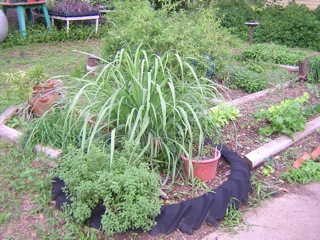
What to do with so much new growth on the herb plants?
And, what about those of you who had the good fortune to harvest before freezing temperatures hit your area? Or, those of you who have yet to see a freeze, but know one is coming? Do you dry your excess herbs for winter use? Do you make Pesto with the abundant basil crop many of us have here in south Texas? Do you make wreaths to celebrate the change of season? Do you make herb vinegar to give as gifts? How about fresh herb bouquets for the table? Or dried ones if your herb plants have already frozen back?
There are so many ways to use both fresh and dried herbs this time of year.
Drying Herbs
An easy way to preserve herbs is to harvest the herbs is by drying them. Wash them if necessary and then dry them off. Make sure they are free of water. Take about 6 sheets of paper toweling and lay the herbs out on one end of the long sheets of toweling. Roll the herbs up in the toweling. Write the variety and date on the package and put it in a frost free refrigerator.
Do not put the package in a plastic baggie as that will retard the evaporation of the water from the leaves, but leave it as is on a shelf in the fridge. The layers of paper toweling help absorb the moisture in the herbs and the frost free feature of the fridge evaporates the water out of the toweling. Eventually- in 3 or 4 weeks- you have nicely dried herbs that have retained their color and a lot of their fresh flavor.
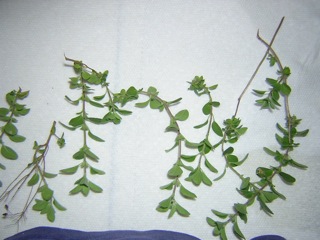
Here’s the oregano I picked clean and ready to roll up in the paper toweling
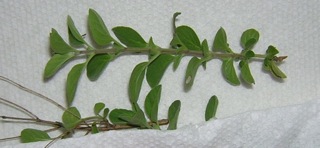
Starting to roll up in the paper towel. You can see the edge of the rolled bit at the bottom.
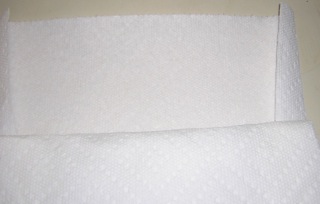
After you get the roll going, fold the sides in so the herbs are completely covered inside the package.
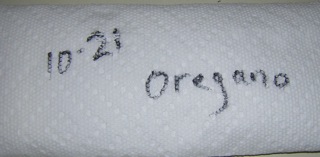
Here’s the finished package ready for the fridge.
After the herbs are dried there are numerous ways to use the. Dried herbs are finely chopped in a coffee or herb grinder designated specifically for use with herbs. Then, blends are made and put in shaker jars.
The blends you could do are nearly endless: Italian- oregano, rosemary and basil, Greek- dill, oregano, parsley, one for poultry using sage, marjoram and thyme, one for fish using dill, lemon peel, fennel… the list is only restricted by your imagination and the type of food your family likes. Citrus peel can also be dried using the above method and you can make lemon pepper, orange basil or mint with grapefruit.
The herbs dried in this manner seem to keep more of their essential oils and color somewhat better than herbs air dried. The flavor is very fresh and pungent. Another benefit to drying herbs with this method is they stay very clean. And, they dry to a nice, crisp state.
Something that may be surprising is how dried celery leaves are ground and then used in a blend. If you’re not growing the cutting or leaf-type celery herb, this is a great way to get a celery flavor into an herb blend or into soup, salads and salad dressing.
I’m thinking drying some herbs this way and making special blends for gifts would be fun. Especially if you know someone who is trying to wean themselves from a diet high in salt and/or fat, a gift of a savory, tasty herb blend from your own garden may help that person on their way to a healthier diet. When drying herbs, none of the beneficial elements, including taste, are lost because those elements are in the essential oils of the leaf. And, the essential oil is what is preserved through drying. Only the water is taken out.
For more on Food Preservation, visit this informative site, How to Preserve Food Easily at Home.

QUOTE FOR THE MONTH
Without deviation from the norm, progress is not possible. -Frank Zappa, composer, musician, film director (1940-1993)
